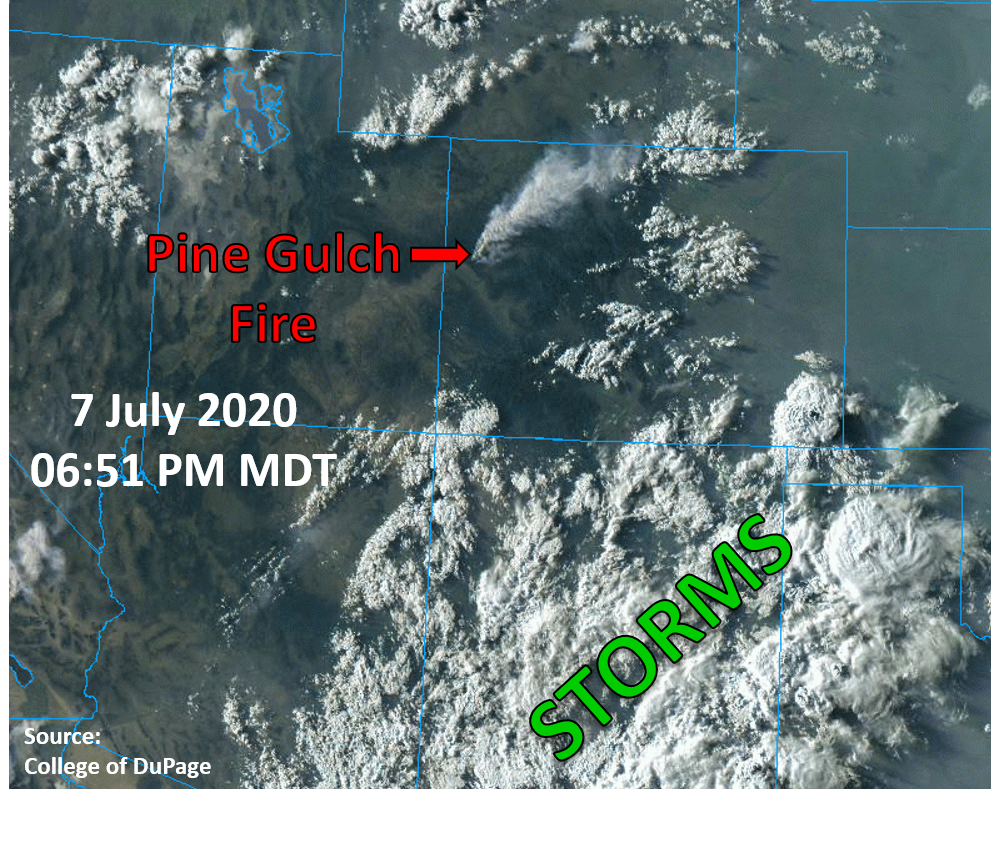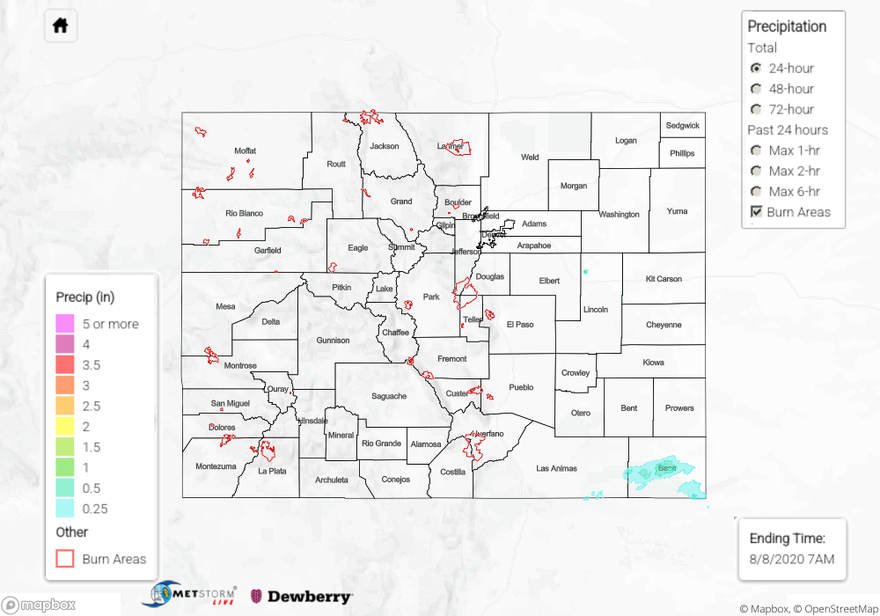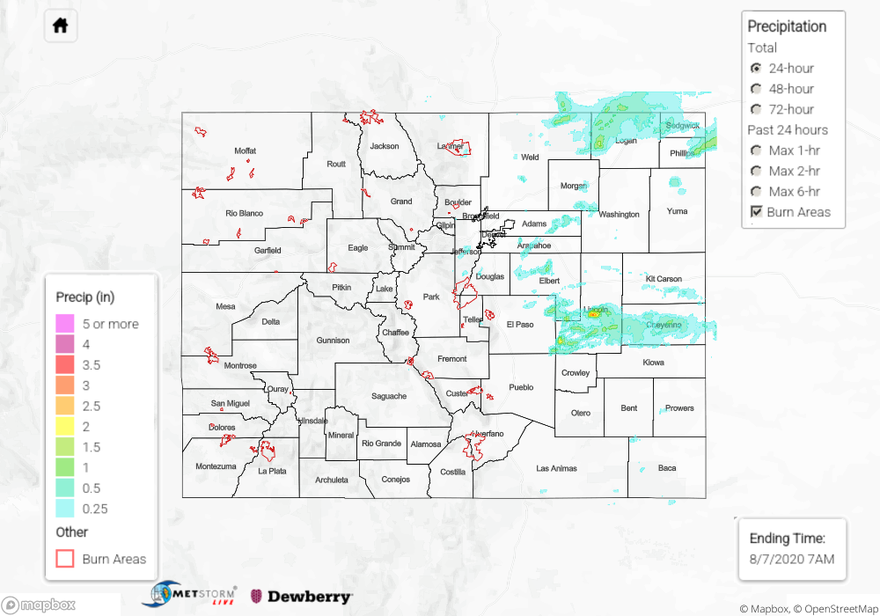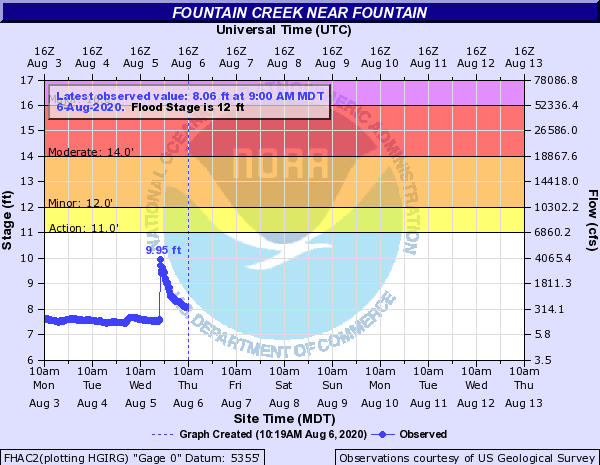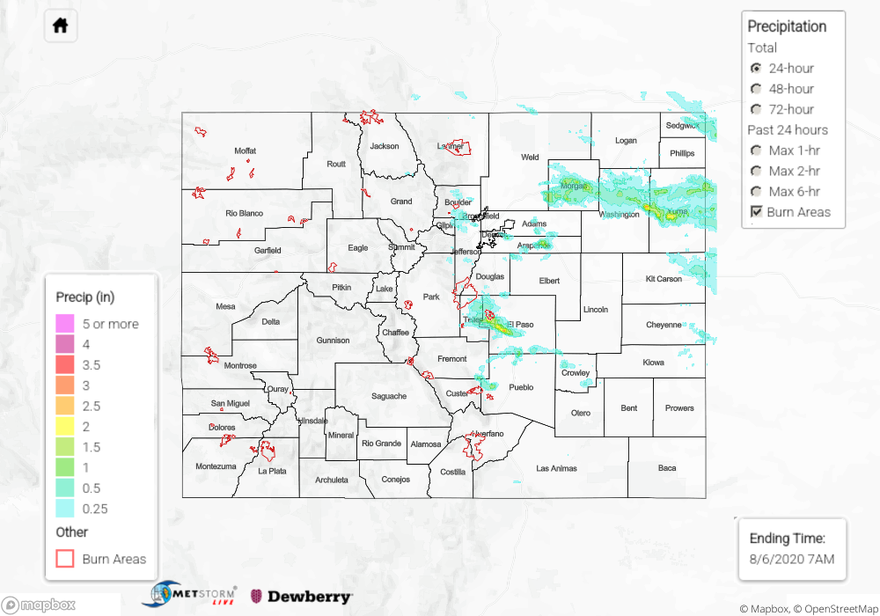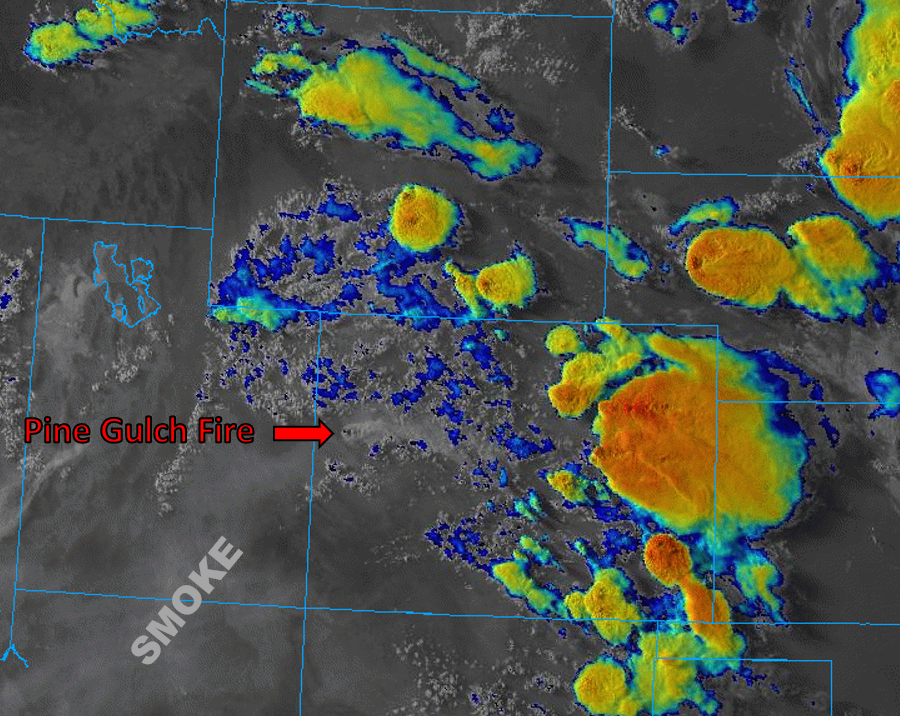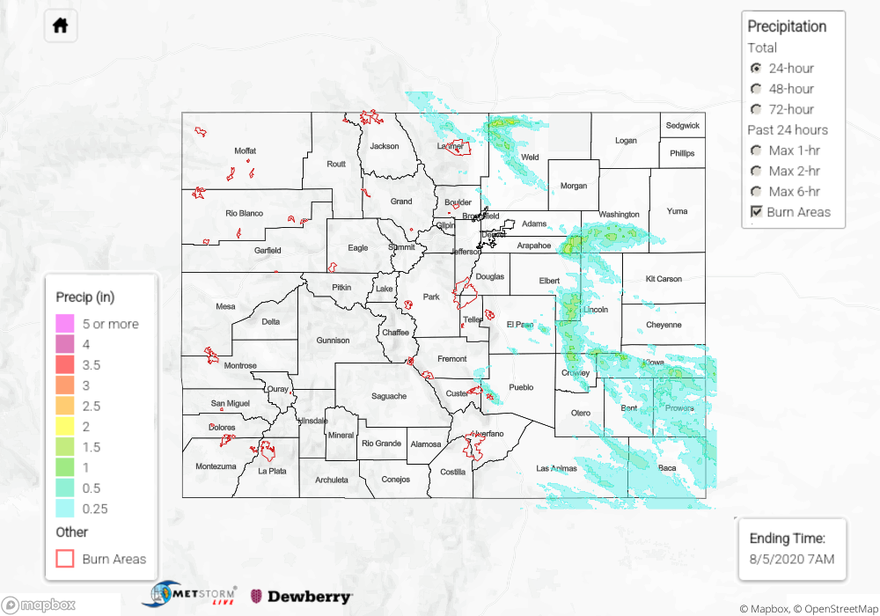Issue Date: Saturday, August 8th, 2020
Issue Time: 10:25AM MDT
Summary:
It stayed hot and dry for most of Colorado yesterday, but a lone thunderstorm moved through Baca County in far southeast Colorado and dropped the state’s only measurable rainfall. This isolated thunderstorm is visible on the true color satellite imagery last evening (see below), which shows storms largely stayed south of Colorado. QPE rain totals indicate up to 1.5 inches fell over Baca County, but limited coverage of rain gauges make this high total difficult to verify. The highest rain gauge total of 0.21 inches was submitted by a CoCoRaHS observer near Springfield. No flood or heavy rain reports were submitted near this storm. Check out the QPE map to see how isolated rain accumulation was from this storm.
Unfortunately, dry southwesterly winds allowed the Pine Gulch Fire to grow once again. As of 11:30AM MDT yesterday, the fire was at 13,680 acres, but the fire has continued to grow since. The fire is easily identifiable on the satellite imagery yesterday (see image below), which is causing smoke to stream northeast over the state. Today will be similar to yesterday, so please pay attention to emergency management if you live near the area.
To see rain estimates near your location over the last 24, 48, or 72 hours, check out our State Precipitation Map below.
